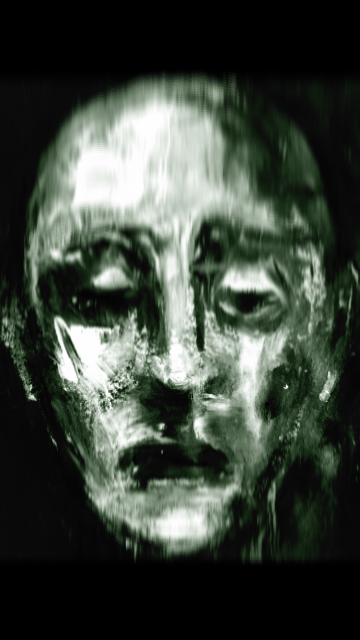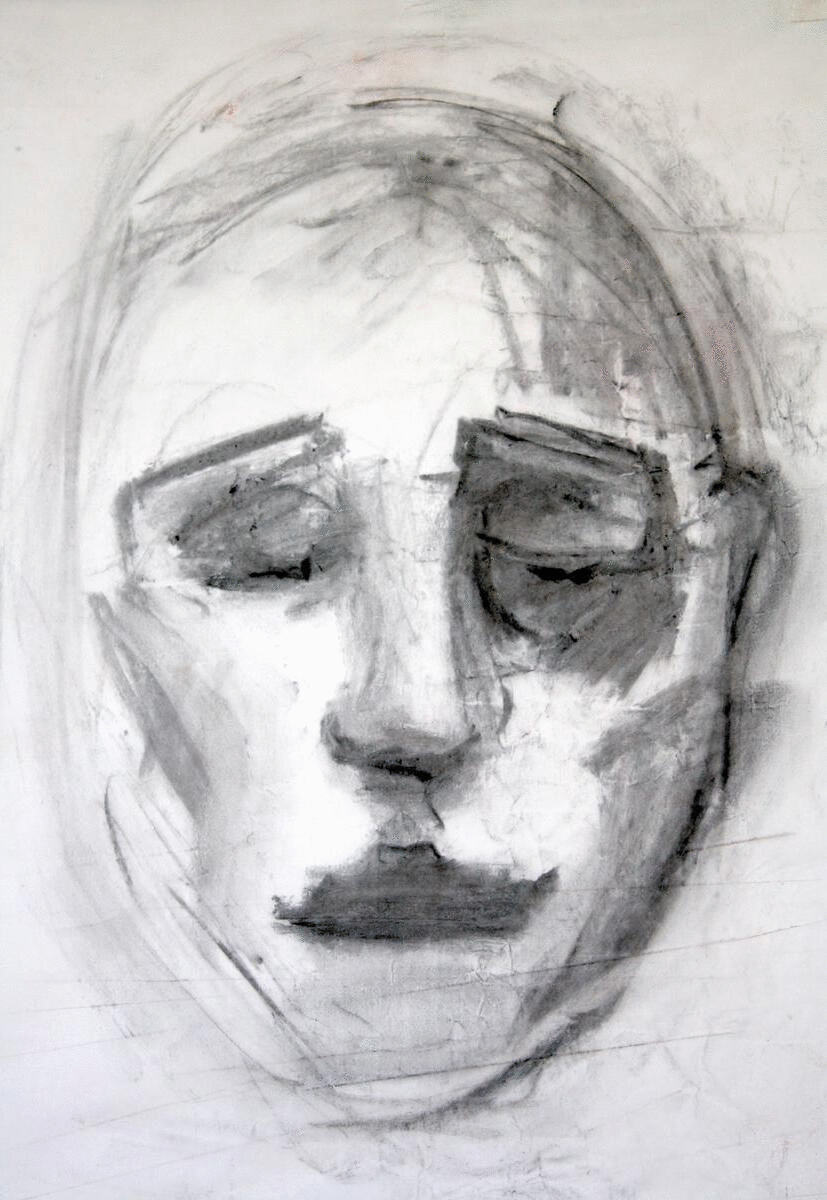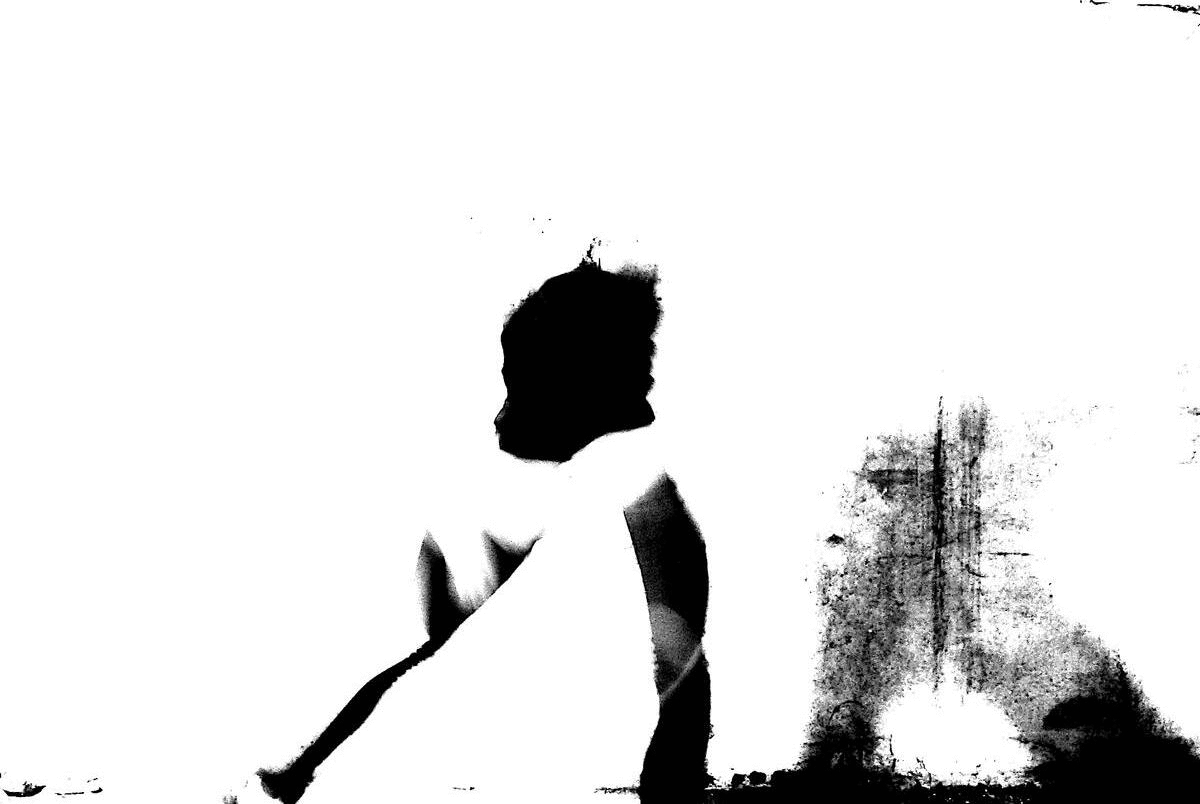DIFFRACTING
DI. FRA. TNG
D F. CTING





DIFFRACTIONS OF AN ATE
* ATE (Accountable Temporary Expedient) is a task constitutive of a fluid-methodology designed for choreographic improvisation, informed by interruptions and shifts of attention. It employs doubt and confusion as tools to question or undo common understandings and to generate personal ones.
A shadow, born from an obstacle (an opaque object blocking light from its trajectory towards a surface), is a projection creating a form (potentially static under artificial light, ever-morphing under natural light). In the practice of ATE * shadow becomes a projected-self. A re-presentation of an original. A replica. An-other body to relate to.
ONE
SHADOW
One of the ATEs in the fluid-methodology deals with shadows. The Shadow Task has to do with presence and imagination, by which through visualising a fictional light shining across and around internal organs of the body, imaginary shadows are generating and morphing on the surrounding tissues or beyond the perimeter of the body as contained by skin, provoking sensorial or emotional responses.
Some of the guidelines of this framework suggest for example to "Travel a shadow beyond the limit of the material body and onto other surfaces in space", to "Imagine migrating the organ to other places in the body and to replace the gap left with dense shadow" or to "focus on the relation or tension between the displaced body part and the hollow space left".
The Shadow Task is simply an expedient and an excuse to invite the body-mind to present options layering over the ones given by the physical body.
By engaging with one's shadow, the task explores imagination as a virtual reality. The dancer is the opaque body that causes it, and through relating to it makes a memory out of this, their mind becomes the generator of a temporary reality in which the two-dimensional version of a self is being moved, designed, handled and controlled in a skilful manner through imagination.
NOT WHAT IT IS.
an indirect representation of it.
an obstacle
a threat.
a diversion
a support.
These two phenomenons, seemingly contradictory -as according to Karen Barad "diffraction is not a replication nor it is a reflection" (2007, p. 229)-, suggest a fascinating similarity when I begin to look at the relationship between the materiality and the ephemerality of shadow, in relation to imagination.
A shadow is ephemeral, it is temporary and immaterial.
In the ATE, shadow becomes a fiction, an imagined body based on a memory. There, as in the photograph, it is a replication.
A reproduction of something that was, and something that can be revived only through imagination.
A question begins to arise: do both and all of these possibilities have an impact (and if so, what kind of impact) on the decisions made in the moment of improvisation? Shifting attention, in doubt and confusion between factual and fictional images and sensations, is addressed as a means of support of the process of questioning common understandings and generating personal ones.
Karen Barad calls diffraction "a riding of the wild and unpredictable waves, the following of lines of flight along the contorted paths of rhizomes, finding whatever “our” and “selves” might be, entangled in the phenomena we once thought we knew”. (2007, p.299)
TWO
DOUBT
During one the of sessions with my collaborators, we found ourselves conversing about the incongruence between the complexity of the task, asking a dancer to notice, select, take decisions, trust or challenge its parameters, and the clarity that is needed in order to do all the above. The attention to details that is demanded of the task in order to be able to cope with the confusion, the doubt and the multiplicity of options that constantly present themselves in the moment of improvisation.
THREE
ATTENTION
Readings of the shadow tasks keep emerging in the practice of it, when complemented by other ATEs, added in over-layering to keep feeding the body-mind with potential points of attention, leading the dancer to read and interpret the tasks "through" one another.
In the case of diffraction, waves spread out after passing the obstacle. In a metaphor, waves are the attention that the dancers dedicate to a particular element of their performance. This could be related to the materiality of their body, for example gravity, breath and the contents of their body; or the ephemeralities such as image, imagination, and how things are constantly changing (emotionally or sensorially).
I have often talked about bending rules or tilting monuments (monuments as a 'given' or something that it taken for granted for always having been there, potentially a buried memory no longer to be questioned). Bending or tilting of attention, around the corners of an obstacle or through an aperture (for example in photography, passed into the region of geometrical shadow of the obstacle) leads to putting in discussion what things are towards what they may be, may have been (possibilities), may not but could be imagined to be (impossibilities). Doubting, bending, tilting, fluidifying as ways to read-through, beyond an apparent reading.
Drop it. Stop for half an inbreath. Change.
In fluidifying
we emerge with the possibility to become something different.
Zygmunt Bauman argues for a world where the fleeting is the dominant paradigm. A world created and afforded by Art, which would contribute to giving immortality to anything transforming the ephemeral into an eternal matter (2018, p.183). A thought which makes of the ephemerality, temporariness and immateriality of a shadow, most concrete and reliable pillars to base existence on. A state of constant becoming, following Bauman's thought, is a state of liquidity, of perpetual change of direction, effort, attention, reason, in a society that is Liquid and never aims at reaching complete satisfaction. This I connect with an idea of con-fusion, where fusing together, also fusing as liquefying, mixing the given order, changes an apparent clarity of thought and action to present itself in other forms.
Noticing the ever-morphing qualities of one's shadow, one's attention, the contradictions present in the multiplicity of of thought and movements happening (in one second!) demand of a dancer to step up the game and deal with confusion.










If the image of a shadow is born from and because of an obstacle,
diffraction is born from the spreading of waves around obstacles.

Yes it is visible, as a contrast of brightness and darkness.
The dark patch on the wall is there, at a moment in time.
It can be photographed, captured as a proof of its existence.
It is not a replication, its photograph is.
And it is not a reflection of the material body, it is the absence
of light caused by it.
It is not material and it is not a ghost of the body.
It is there
present,
and can even be made a connection with through touch of the surface it lives on.
When a dancer practices that Shadow Task in the ATE, they feed themselves of images (a shadow they see) and of imagination (a shadow they remember or imagine).
Diffraction, according to Donna Haraway, is about heterogeneous history, not about originals (1997). In the practice of Shadow Task what is being put in discussion is the reliability of image over imagination, and to propose possible 'other' options to the moment of performance.
shadow
doubt
attention
confusion
interference
imagination
trajectory
obstacle
contradiction
multiplicity
change
threat
support
reason
void
An overlap of information happens in the moment of choreographic improvisation.

The dancer is selecting where to place their attention, what to bring to the foreground and what to leave behind.

I invite the body-mind to engage in oppositions and tractions triggered by the demands of the task to select, contradict, multitask while simultaneously noticing the consequences of these decisions.
The sparks and the ephemeral uncertainties that arise are not comfortable. This is where a performer becomes vulnerable, and in the courage to face unknowns and to commit to change, finds urge to share their state.
I look for reasons to move,
expedients and for provocations for change,
giving an opportunity for the dance
to find temporary anchor points
in the midst of perpetual uncertainty.
Dubium has to do with duality, separation, ambiguity. Waving between different or contrary thoughts. Movement of the mind
in this condition.
space in between these two is a space of confusion, the addition of multiple changes, the "leftover space/time" (Pagnes, A. 2021). The void, black-hole as space of infinite possibilities of change.
Kafka, F. (2006)


Waves of attention, spread and hit obstacles
sometimes fictional, sometimes factual.
Diffraction is considered a result of interference: waves interfering with one another.
The notion of ‘interference’ flirts with this practice.
In the practice of ATEs there is always a ready-to-jump-in element of interference.
This might be a provocation that comes from another performer in the space, or a clear parameter of the tasks which is being decided to be triggered at a given moment. It might be evident, or just about perceivable... just: off the grid.
An interference can lead to different results. It may alter the current action, it may interrupt it, delay it or deviate it creating a new current or trajectory for the body-mind. It may originate from the present moment, from a memory or from an idea projected into the future. In reference to Fydor Dostoyevski's novel Notes from the underground (2020), the lyrics of a hardcore song by the Italian contemporary hardcore band Hiroshima titled "Interferenze dal sottosuolo" (Interferences from the underground) deals with memories emerging to impact the present. In an similar way, memory of sensation in the ATE functions as an interference from the underground, reaching the surface influencing the present action.
From the underground, to the overground, there is an action of "bending" that comes to the foreground.
I see diffraction as a way to demand multiple layers of a moment in time to exist, at once, in one second! Several versions of facts, interpretations of the task, personal challenges or insights allow for complexities to present themselves, live, and in the act of choreographic improvisation reveal the decision in the moment, with transparency to the failures, the funny moments, the struggles and brain-glitches that appear because of the induced Accountable Temporary Expedients. Several layers of meanings and of personal realities appear, naked in front of one another and of an audience.
waves may either join and create a more intense wave, erase each other, or something in between.
I have on several occasions described the ATE-methodology as a dialogic practice of movement and thought. Dialogue is generally understood as a conversation between two or more parts. Here dialogue is approached as the conversation between these two entities at the core of my performance practice.
Due to the ephemeral and fleeting nature of this particular dialogue, in the methodology I propose using language to guide but not to lock, image to suggest but not to illustrate, and the blurring of both into one other to soften but not to lose focus. One single register of language is often not sufficient to serve this purpose, therefore the practice serves itself of a collection of poetic, reflective, narrative and theory based texts, inviting access to the work through a conversation of multiple entry points.
I see the confusion as the addition and accumulation of multiple changes. Hanna Arendt, in reference to Franz Kafka's Aphorism "HE" writes: "Without 'him' there would be no difference between past and future, but only everlasting change"
Engaging with a state of perpetual change and uncertainty (uncertain between knowing and naming, between clarity, doubt or confusion, between thought and sensation or emotion) is a tendentially uncomfortable condition. By wilfully generating internal conversations or conflicts between two or more (factual or imagined) options presents potentials, which at the moment of doubt -before a decision is made, which the ATE provokes- are still latent.

When thinking about the practice of ATEs through diffraction, the notion of wave lends itself as a metaphor and a tool to approach fluidity, doubts and decisions:
Water waves -relating to the practice through the idea of fluidity and flexibility of rules, parameters, re-organisation of the body as we know it.
Light waves -close to the idea of Shadow Task as we use imagination of light beams coming into the body and generating certain shapes under, around or from the part of the body they are projected onto, which encounter further obstacles on the way out of the body, generating interfered shadows, interfered versions of the self-of the body part
Sound waves -making a connection to the use of sound and words in the practice, at times being voice, spoken live to instruct or disrupt, at others overlapping with recorded voices, sounds and noises that by the layering of multiples prevent the listener (dancer or audience) from grasping sense out of the words, forcing them to take a decision to ignore or select fragments to base their own interpretation on.
"Attention is what steers your perception, what controls your reality. A gateway to the mind" Apollo Robbins, stage magician and master of misdirection (2013).
By engaging with noticing and attention, foregrounding and backgrounding, I am interested in where the mind can grasp a detail, making that a landmark in the landscape of perpetual change (a landscape of confusion and multiplicity), which can produce diversions of trajectory, or be stopped, glitched, disrupted by the body needing attention in the urges of its material need (for example by catching a fall or preventing to bump against a wall). Confusion, Doubt and Attention in the ATE-methodology all deal with noticing and taking decisions upon elements of the dance.An Accountable Temporary Expedient presents an ongoing challenge demanding to notice, support or disrupt reoccurrences and patterns at the levels of seeing, sensing, feeling, remembering the detail and the totality, at once, to be able to say 'get out of this pickle'.
Until here this website has led the reader to weave through some notions that are central to the practice of ATEs. It has touched facets of the thinking body engaged with the practice of this methodology.
The multi-medial transliteration of the practice enabled me to expose certain aspects of the work through different (nevertheless all digital) means of transmission. It is by no means a replacement of the physicality and live-ness of a dancer's psycho-physical experiences. These forms of documentation and translation of the work can be considered limbs through which it can gesture and articulate itself.
What arises when shifting of medium (in this case from movement of body and of thought to moving or still image and spoken or written text) become at times disembodied and at times enable a delving into further depth, where the rational mind allows for a potentially unapparent richness of the practice to be revealed in intelligible ways.
The photographs related to the notion of shadow became a visualisation of the task, where the questioning of the relation of one's shadow to oneself, the morphing of its shape, the sensation of abstraction of the body come through the images to illustrate an experience.
The overlap of text and image allowed for a complexity and challenging of the reader's attention, to invite them to feel the splits that occur in a dancer's focus when trying to do more than one thing at once.
The video works became something else, artefacts in their own right, originating from the practice, yet not aimed at explaining it. A blend of documentation and reiteration of the work through different mediums.
Not to conclude but to feed my reasons to keep the research alive:
Through this digital entry I have explored some of the possibilities of communicating the research, expanding outside of the realms of movement and thought, and bringing different mediums in dialogue through superimpositions, abstractions and analogies.
Through this composition I invite the reader at this point to let go of the about-ness of what they have encountered. Hopefully they will have retained some confusion, some doubts and will be able to notice their attention, shifting to different aspects of their experience in scrolling the content of this black and green page.
Bibliography:
Arendt, H., 1978. The Life Of The Mind. Harcourt Brace Jovanovich. New York.
Barad, K. 2007. Meeting the Universe Halfway: Quantum Physics and the Entanglement of Matter and Meaning. Durham: Duke University Press.
Bauman, Z., 2018. Liquid modernity. Cambridge: Polity Press.
Dostoyevsky, F. and Garnett, C., (2020). Notes from the Underground. [S.I.]: Duke Classics.
Haraway, D. 1997. Modest‐Witness@Second‐Millennium.FemaleMan‐Meets‐OncoMouse: Feminism and Technoscience. New York: Routledge.
Hiroshima, 2006. Interferenze dal sottosulolo. [CD]. Genova
Kafka, F., Calasso, R., Brock, G. and Hofmann, M., 2006. The Zürau aphorisms of Franz Kafka. New York: Schocken Books.
Robbins, A., (2013). The art of misdirection. [video] Available at: <https://www.youtube.com/watch?v=GZGY0wPAnus> [Accessed 6 February 2021].